The World Health Organization recommends exclusively breastfeeding for the first 6 months. Breastmilk contains many vitamins, minerals, fats, carbohydrates, and proteins necessary for the proper development of the infant. Parents buy infant formula because they are unable to breastfeed, breast milk is inadequate, or are looking for a breastmilk substitute.
Buying formula can be expensive and tricky. Moms want to choose the best formula for their infant’s mental and physical growth. They also want to avoid formula that may trigger allergies and damage the current and future health of their child. Moreover, moms want to purchase the products that are trustworthy, and safe to eat for their little ones.

Sam’s Club cooperates directly with the brands, without third party dealers, which guarantees authentic products. Sam’s Club receives wholesale competitive prices from their suppliers and that value is transferred to their members directly. So their members can be rest-assured to find all the quality brands and products at a great member value, without needing to spend too much time on choosing and comparing. Yeah, that’s right. You save the precious time for taking care of your beloved, and-maybe-a-bit-naughty little ones.
Today, we’d introduce these three brands and explain what ingredients make them unique.

Abbot Similac Alimentum

Similac Alimentum is:
- For infants that cannot digest and absorb lactose and need another carbohydrate source for energy.
- The casein protein is broken down into smaller pieces for easier digestion and absorption, which reduces milk protein allergies.
Similac is a hypoallergic formula for infants with lactose intolerance and casein protein allergy. Lactose is the main carbohydrate in human milk and cow’s milk. Lactose is made of two sugars, glucose, and galactose. To digest lactose, the digestive system of an infant must have an enzyme called lactase that breaks up the lactose into glucose and galactose to be digested and absorbed1. Some infants lack lactase because there is a reduced amount in the small intestine, have had an injury to the small intestine because of an infection or were born premature. When the lactose is not absorbed by the small intestine, it goes to the large intestine where it is consumed by bacteria. The bacteria then produce gas, bloating, diarrhea, abdominal cramps, and flatulence. This causes discomfort and crying in the infant2.
1Heine RG, AlRefaee F, Bachina P, et al. Lactose intolerance and gastrointestinal cow’s milk allergy in infants and children – common misconceptions revisited. World Allergy Organ J. 2017;10(1):41. Published 2017 Dec 12. doi:10.1186/s40413-017-0173-0
2Bhatnagar S, Aggarwal R. Lactose intolerance. BMJ. 2007;334(7608):1331-1332.
doi:10.1136/bmj.39252.524375.80

Figure 1. Undigested lactose is consumed by bacteria in the large intestine which leads to symptoms
Lactose is essential because it is broken down into glucose. Glucose is the preferred fuel for the brain because the brain is the most energy demanding organ in the body. The brain is also growing at a rapid rate. In the first year, the brain doubles in size and in the second year increases to about 80% of adult size. Thus, the brain needs a substantial amount of glucose to grow and meet its energy demands3.
3Gilmore JH, Knickmeyer RC, Gao W. Imaging structural and functional brain development in early childhood. Nat Rev Neurosci. 2018;19(3):123-137. doi:10.1038/nrn.2018.1

Figure 2: The brain is energy demanding in order to grow to 90% by age 5
Lactose is replaced with Corn Maltodextrin
Similac Alimentum has replaced lactose sugar with corn maltodextrin sugar. Maltodextrin is a white powder usually made from corn, potato starch, rice, or wheat. The starch from these foods undergoes processing to break down the starch into smaller pieces resulting in glucose molecules. Maltodextrin is similar to lactose because it has an approximate energy value of 4 kcal per gram and is the main carbohydrate source in non-allergenic infant formulas. The glucose molecules in the maltodextrin are rapidly absorbed from the small intestine giving the body and brain energy it needs. Researchers in a scientific report in Nature magazine, compared the effect of lactose versus maltodextrin on the cognitive performance of piglets in spatial tasks. They chose piglets because they are a species with high cognitive abilities, and share similarities with humans in terms of nutritional needs, as well as brain development.

They researchers fed two groups of pigs either lactose or maltodextrin and then had the piglets memorize the location of feed buckets. They then changed the location of the feed buckets to discover if the piglets could find them. The study concluded that maltodextrin fed piglets had a higher reference memory than lactose fed piglets. This study showed that maltodextrin had a positive effect on the brain function of piglets4.
4Clouard, C., Le Bourgot, C., Respondek, F. et al. A milk formula containing maltodextrin, vs. lactose, as main carbohydrate source, improves cognitive performance of piglets in a spatial task. Sci Rep 8, 9433 (2018). https://doi.org/10.1038/s41598-018-27796-1
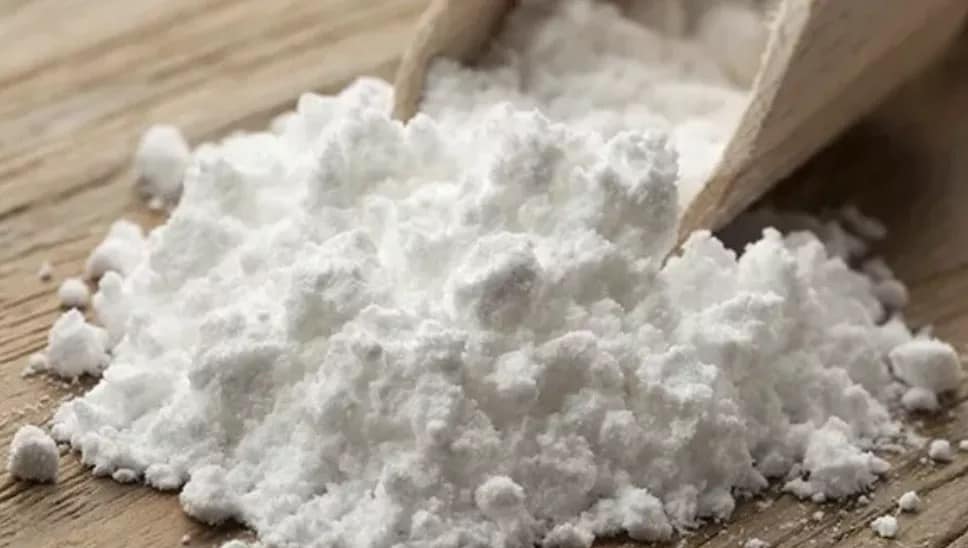
Figure 3: Corn maltodextrin is used in the place of lactose to provide energy demanding brain with sugar
Cow’s milk and breast milk contain two milk proteins, whey, and casein. Whey protein is rapidly digested to provide the growing infant with energy, while casein is digested slowly to provide sustained energy over time. Casein is the curdy cottage-cheese looking stuff babies throw up all over your shirt. The digestive system of an infant may be too immature to completely digest and absorb casein and could lead to an allergy. Casein is the most dominant cause of cow milk protein allergy. Infants who have an allergy casein can have skin or stomach symptoms. Casein hydrolysate is casein that has been broken down (hydrolyzed) into its simplest form called amino acids for simpler absorption and utilization. This reduces discomfort in the baby and the amino acids can be used for energy, growth, and repair. A study done in the Journal of Pediatrics found that the Similac Alimentum children with known positive allergies to cow milk tolerated the hydrolyzed casein5.
5Sampson HA, Bernhisel-Broadbent J, Yang E, Scanlon SM. Safety of casein hydrolysate formula in children with cow milk allergy. The Journal of Pediatrics. 1991 Apr;118(4 Pt 1):520-525. DOI: 10.1016/s0022-3476(05)90001-2.
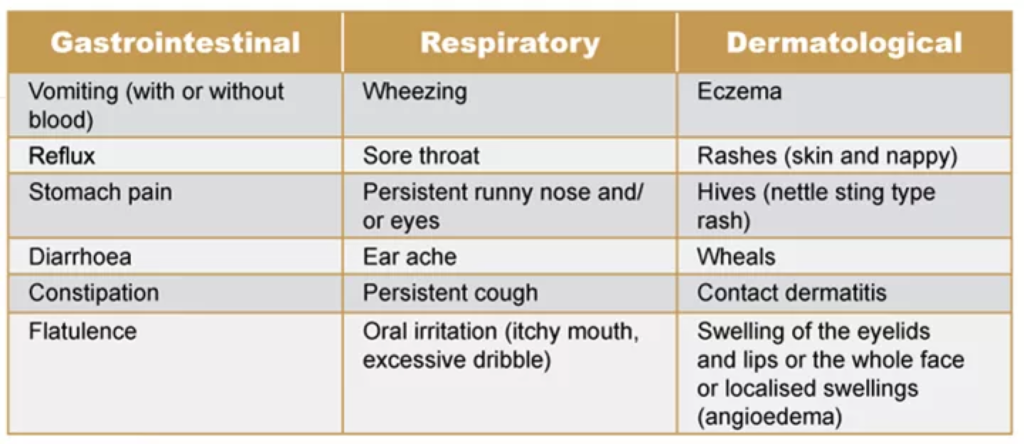
Figure 4. Symptoms of cow’s milk protein allergy
A2 Platinum Premium Infant Formula

A2 Platinum Formula:
- It contains the same form of casein protein found in breast milk called A2 beta-casein
- A2 beta- casein reduces stomach discomfort for the infant because it is easily digested compared to A1-beta-casein formula.
Breast milk contains A2 beta-casein which is easier to digest and absorb. Cow’s milk can contain both A1 and A2 beta-casein. A1 and A2 milk are differentiated are not differentiated by breeds but by DNA testing. Casein is a milk protein and protein is a long chain of molecules called peptides. Protein enzymes act on these large peptides to reduce them to their smallest form called amino acids.
The difference between A1 and A2 is found at the 67th amino acid. Protein enzymes can cleave A1 milk at the 67th amino acid histidine. Protein enzymes cannot cleave A2 milk at the 67th amino acid proline. This difference in A1 and A2 accounts for how the two beta-caseins affect the digestive system of infants. A2 beta-casein having the same composition as breast milk is gentler on the digestive system of infants.

Figure 5: A1 milk is cleaved at the 67th amino acid histidine and proline amino acid hinders the cleavage of A2 casein by protein enzymes
In a 2016 study conducted at the Department of Gastroenterology, Xin Hua Hospital Affiliated to Shanghai Jiao Tong University School of Medicine (Shanghai, China), forty-five Han Chinese subjects participated in a double-blind, randomized trial where participants consumed milk containing both A1 & A2 beta- casein and milk containing only A2 beta-casein. The participants who consumed only A2 milk did not complain of discomfort nor pain and were able to continue to consume A2 milk. Overall, the study concluded that A1 beta-casein was associated with digestive inflammation and worsening discomfort6.
6Jianqin, S., Leiming, X., Lu, X. et al. Effects of milk containing only A2 beta casein versus milk containing both A1 and A2 beta casein proteins on gastrointestinal physiology, symptoms of discomfort, and cognitive behavior of people with self-reported intolerance to traditional cows’ milk. Nutr J 15, 35 (2015). https://doi.org/10.1186/s12937-016-0147-z
Aptamil Profutura
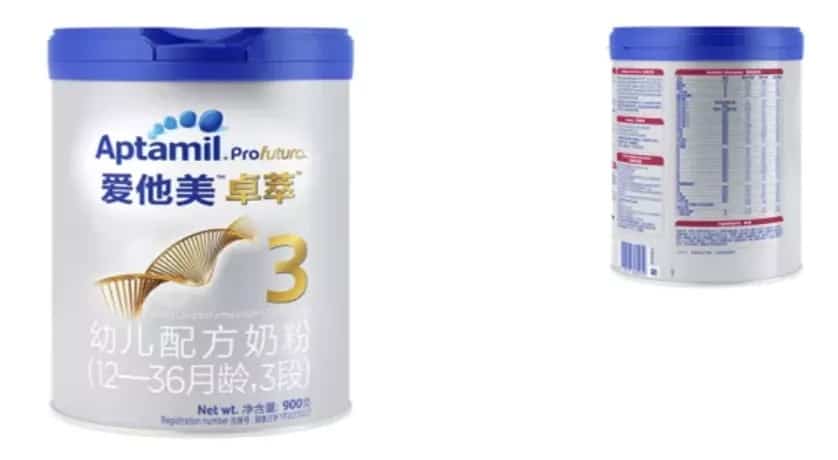
Aptamil Profutura:
- It contains (sn-2) beta-palmitate, a milk fat. (Sn-2) beta-palmitate does not create calcium soaps and hard stools. It also does not reduce fatty acid and calcium absorption.
- (Sn-2) beta-palmitate leads to stronger bones because calcium is absorbed and stored in the bones for stronger and healthier bones. It also allows for the absorption of fatty acids that provide energy, make hormones and bile salts. It also allows for softer stools which decreases constipation.
What makes Aptamil ProFutura unique is that it contains a milk fat also found in breast milk called (sn-2) beta-palmitate to 50%. Infant formula brands contain different kinds of fat to mimic those found in formula. Fat is needed for the healthy development of the brain, to make hormones, bile salts for the digestion of fats, and to provide energy. Most added fats come from vegetable oils such as sunflower, coconut, and rapeseed oil. It is especially important to avoid an oil called palm olein. Palm olein reduces calcium and fatty acid absorption, and the intake of calcium into the bones. Palm olein also leads to harder stools which may cause constipation and discomfort7. (Sn-2) beta-palmitate found in breast milk allows for the absorption of fatty acids, calcium and makes for softer stools. The difference between fats like palm olein and (Sn-2) beta-palmitate is that in the small intestine, unabsorbed palm olein could create calcium soaps, thus limiting the absorption of calcium for strong bones. (Sn-2) beta-palmitate on the other hand, allows for the absorption of calcium8.
Also, Aptamil ProFutura contains NuMMOs™ with over 100 structures9 that mimic10 breastmilk oligosaccharides11; stimulating your baby’s superior self-care12! 0-3 years is the golden age for babies’ brain development [13]. This formula is added with an optimal amount of [9] DHA.
11Lasekan JB, Hustead DS, Masor M, Murray R. Impact of palm olein in infant formulas on stool consistency and frequency: a meta-analysis of randomized clinical trials. Food Nutr Res. 2017;61(1):1330104. Published 2017 Jun 14. doi:10.1080/16546628.2017.1330104
8Havlicekova, Z., Jesenak, M., Banovcin, P. et al. Beta-palmitate – a natural component of human milk in supplemental milk formulas. Nutr J 15, 28 (2015). https://doi.org/10.1186/s12937-016-0145-1
9 a. L COULIER, J TIMMERMANS, R BAS, et al. In-Depth Characterization of Prebiotic Galactooligosaccharides by a Combination of Analytical Techniques[J]. Journal of Agricultural and Food Chemistry. 2009, 57: 8488-8495.
10a. Stahl B. Thurl S. Zeng J.R. et al. Oligosaccharides from Human Milk as Revealed by Matrix-Assisted Laser Desorption/Ionization Mass Spectrometry[J]. 1994, 223(2): 218-226.;b. Boehm G, Fanaro S, Jelinek J, et al. Prebiotic concept for infant nutrition[J]. Acta Paediatr Suppl. 2003, 91(441): 64-67.
11Breastmilk oligosaccharides are the third largest solid component of breast milk, after lactose and lipids.
12Moro G and Boehm G. Clinical Outcomes of Prebiotic Intervention Trials during Infancy: A Review. Functional Food Reviews. 2012, 4(3): 101-113.
13毛萌,李廷玉. 儿童保健学[M]. 北京:人民卫生出版社,2014: 31.
14Please refer to the nutrition fact for “optimal amount”. “Optimal amount” refers to a. The amount of DHA as a percentage of total fatty acids in the product is designed with reference to the World Perinatal Congress recommendations. Koletzko B, Lien E, Agostoni C, et al. The roles of long-chain polyunsaturated fatty acids in pregnancy, lactation and infancy: review of current knowledge and consensus recommendations. Journal of Perinatal Medicine. 2008, 36(1): 5-14.;b. Exceeds 0.30% across the whole series. Conforms to EFSA (European Food Safety Authority) professional opinion. Scientific substantiation of a health claim related to docosahexaenoic acid (DHA) and arachidonic acid (ARA) and visual development pursuant to Article14 of Regulation (EC) No.1924/2006

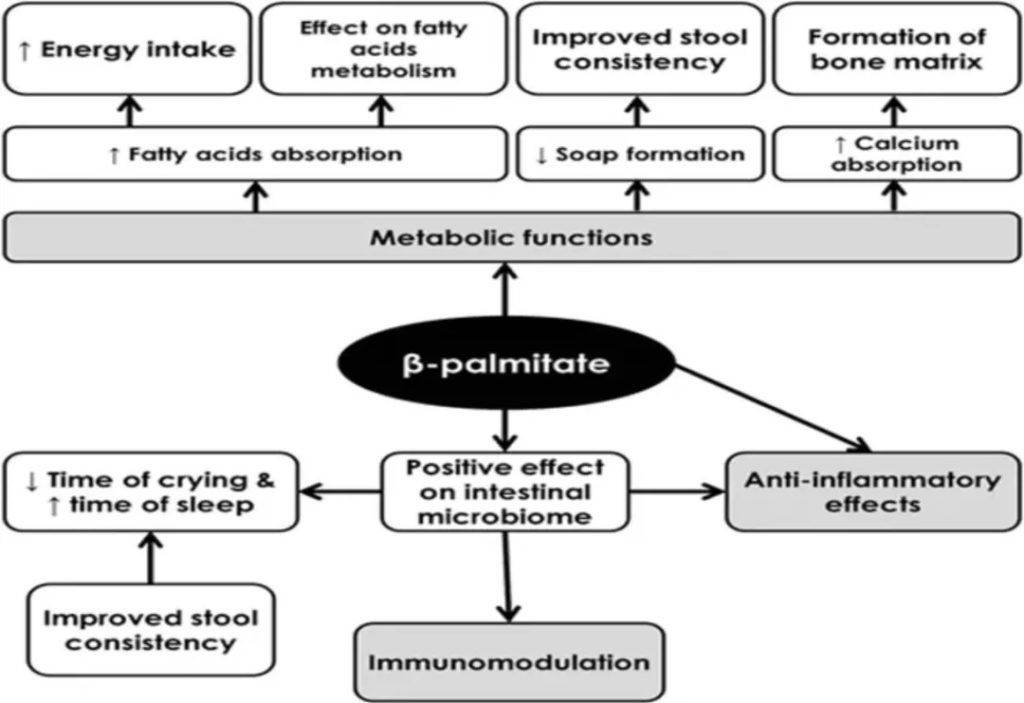
Figure 6: (Sn-2) beta-palmitate increases calcium absorption, stool consistency and fatty acids absorption
I hoped you enjoyed this article. In our next issue we will discuss ingredients in baby food for different brands. Tune in to learn which ingredients most affect the health of your baby. Cheers!
Little Freddie:
Nutrient-dense for a Growing Body
Once a baby has been adequately breast-fed and is getting older, it’s time to get started on solid foods. it is crucial to include foods that do not contain artificial ingredients and replace the bulk of the meal with water. Little Freddie are nutritionist developed and contain no fillers. Here at Sam’s Club, we have a variety of Little Freddie meals and snacks, we would like to introduce you to one of our parents’ favorite.
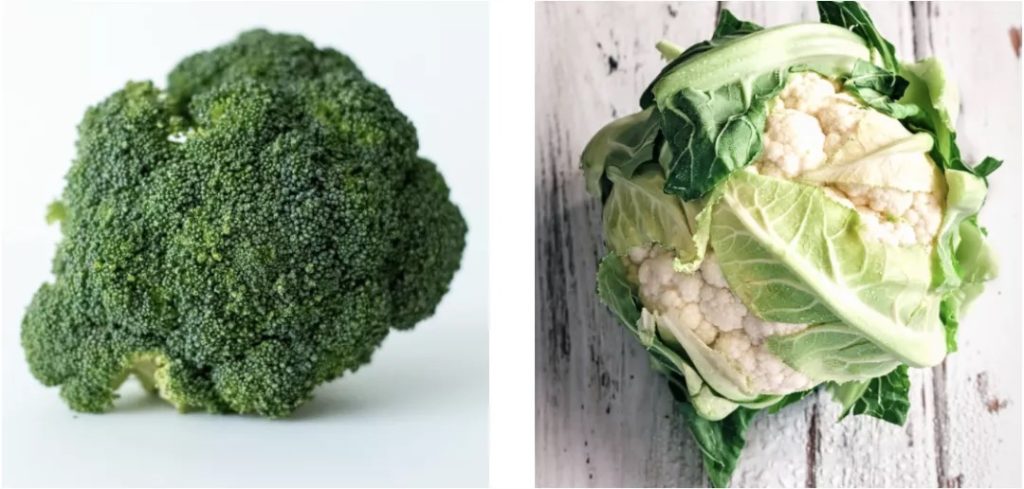
Figure 7: Little Freddie Atlantic Salmon with Broccoli and Cauliflower
Little Freddie Atlantic Salmon with Broccoli and Cauliflower is a good meal that targets brain development in infants. Did you know that the brain is 60% fat? An infant’s brain doubles in size in the first year and needs healthy Omega 3 fats to grow. The correct nutrition for the brain is essential because it has a substantial influence on concentration, behavior regulation and abstract thinking9.
9Nurliyana, A., Mohd Shariff, Z., Mohd Taib, M. et al. Early nutrition, growth and cognitive development of infants from birth to 2 years in Malaysia: a study protocol. BMC Pediatr 16, 160 (2016). https://doi.org/10.1186/s12887-016-0700-0

Figure 8: The human brain is 60% fat
Broccoli and cauliflower contain Vitamin K, calcium, magnesium, and potassium for healthy bones, teeth, and nails. Vitamin K and Vitamin D work together to put calcium into bones. Vitamin K also help blood clot which improves healing after a cut10.
10Weber P. Vitamin K and bone health. Nutrition. 2001 Oct;17(10):880-7. doi: 10.1016/s0899-9007(01)00709-2. Erratum in: Nutrition 2001 Nov-Dec;17(11-12):1024. PMID: 11684396.
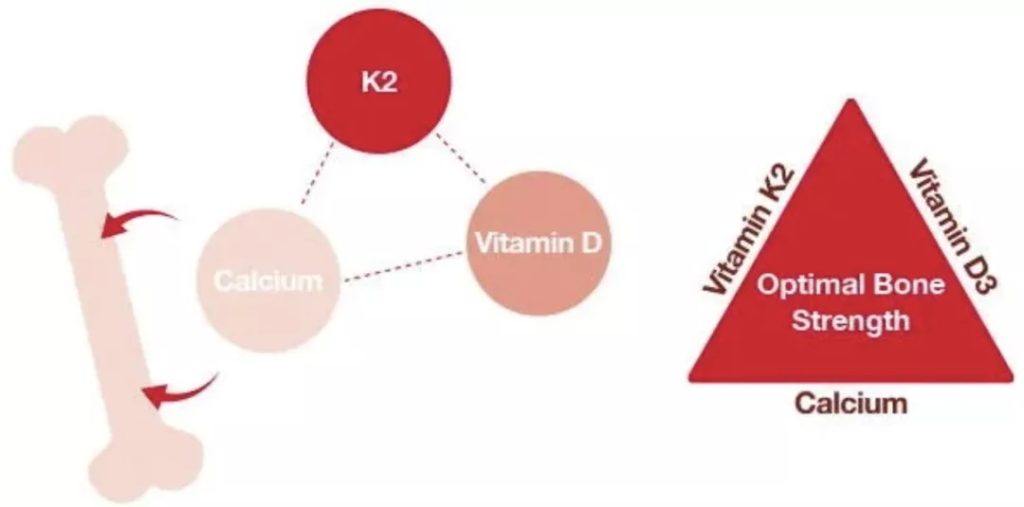
Figure 9: Vitamin K along with Vitamin D puts calcium into the bones
Broccoli and cauliflower also contain antioxidants which protect cells against damage and support healthy tissues. They also contain lutein and zeaxanthin which are concentrated in the retina. Lutein and Zeaxanthin strengthen vision and reduce against night blindness11.
11Buscemi, Silvio et al. “The Effect of Lutein on Eye and Extra-Eye Health.”
Nutrients vol. 10,9 1321. 18 Sep. 2018, doi:10.3390/nu10091321


Figure 10: Lutein and Zeaxanthin are necessary for the vision
I hoped you enjoyed this article. In our next issue we will discuss ingredients in baby food for different brands. Tune in to learn which ingredients most affect the health of your baby. Cheers!
For new member of Sam’s Club, you will get an RMN260 voucher when you spend RMB800 on some of the favorite infant formula brands. Shop now as the special offer ends on Mar 31, 2021.
Not a member yet?
Click and long press to:
extract the QR code

download the app

About Sam’s Club
Sam’s Club is a paid membership store with over 800 clubs and 50 millionmembers worldwide, offering members high-quality and high-value products selected from the top origins in the world.


